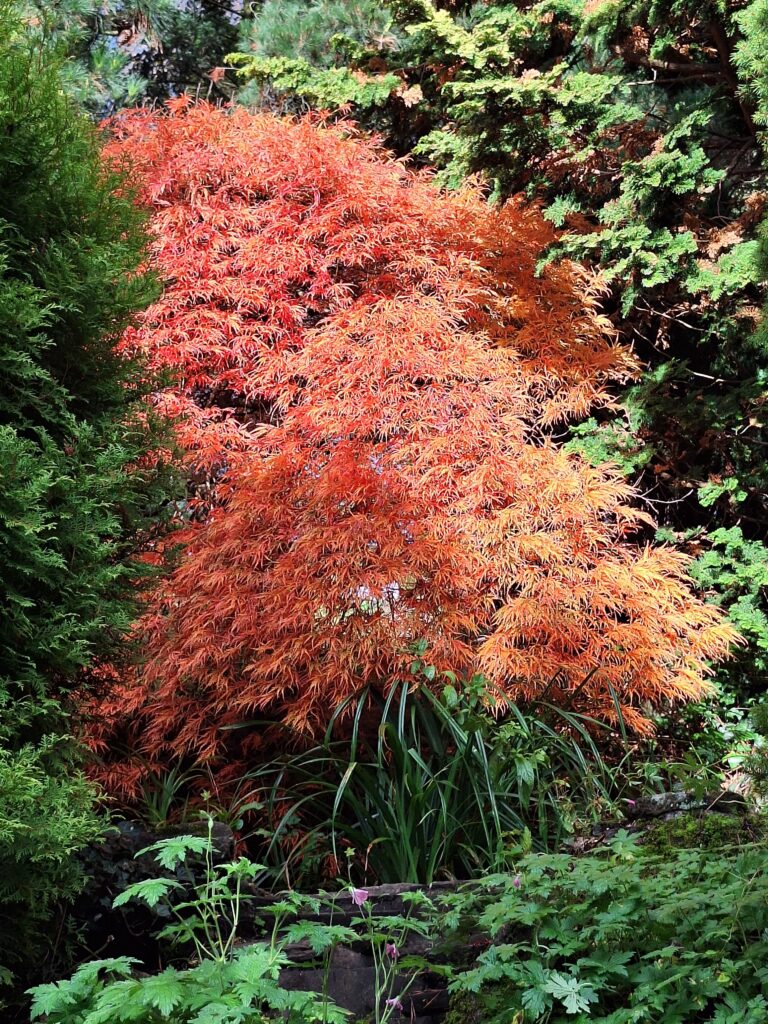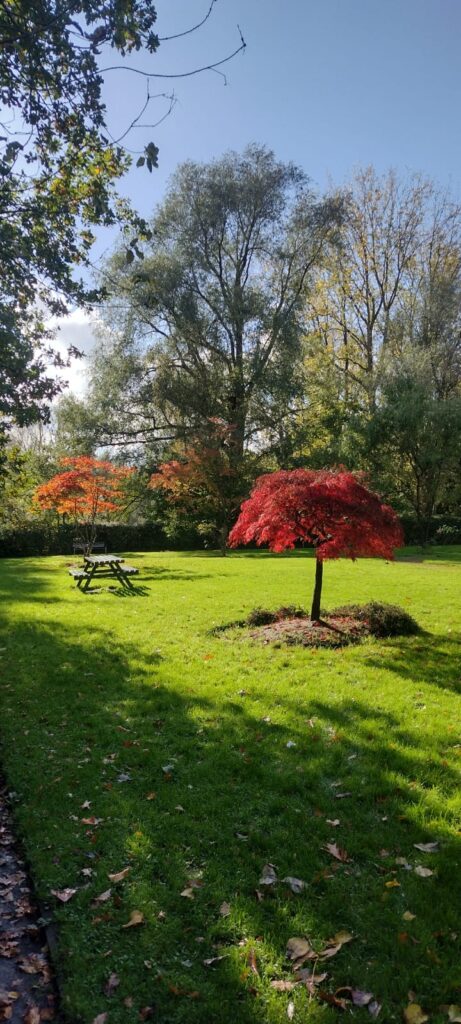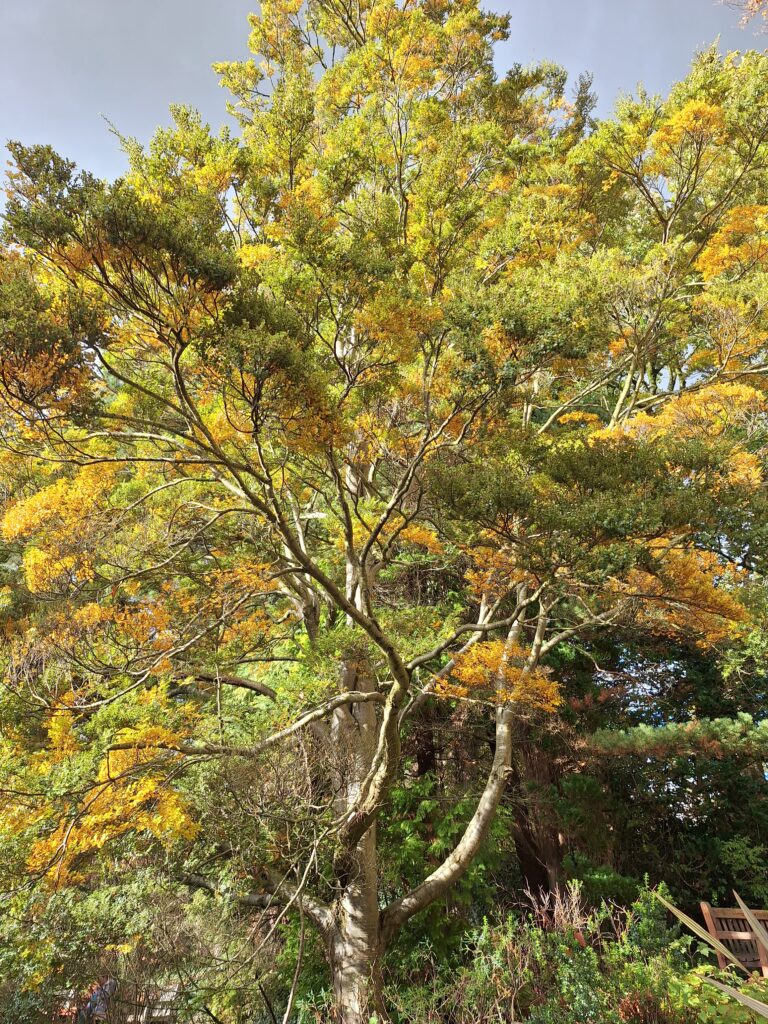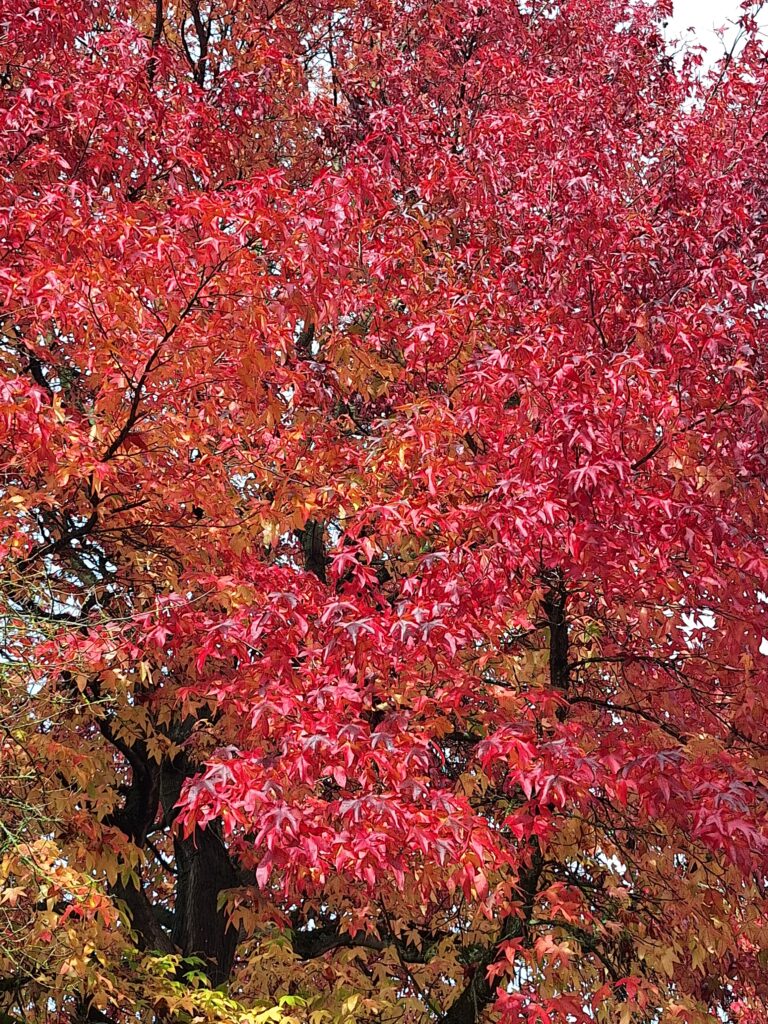As autumn colours present a glorious display in the Park and Gardens, we want to feature the work of two of our dedicated Friends of Fletcher Moss Park and Parsonage Gardens, Stephanie Ryan and Els Couenberg, who between them have compiled the comprehensive list of notable trees and shrubs that can be found on this website (under ‘What To See’).
Recently Stephanie reflected on many years of work identifying the trees and shrubs in Fletcher Moss Park, noting that her list gives a fair representation of species in each area of the park. The trees per area reflect the conditions in that area; eg in the ‘Water Meadow’ the trees include species such as Alder, Water Birch and Downy Birch that thrive in wet conditions; in the ‘Wildlife Area’ there are native species such as Hawthorn, Blackthorn, Bullace (a wild plum), Hazel and Wild Crabapple; and around the Cafe, where the conditions are drier, there are species such as Holly, Yew, Camellias, Rhododendrons and Beech. Every plant has been perfectly planted with a view to height, spread, position and soil conditions.
The list shows that Fletcher Moss Park is an incredible site, planted with a vast array of species of trees and shrubs, and also many sub-species within a species. The list of viburnums numbers well into the mid teens eg Viburnum plicatum, Viburnum davidii, Viburnum tinus, Viburnum x carlcephalum etc. The Park’s planting is also complemented by the planting in The Parsonage, so what the Park is missing within a species, those are to be found in the Parsonage Garden eg Viburnum plicatum f. plicatum ‘Popcorn’. The tree and shrub species are rarely duplicated, leaving space for new species to be introduced, thus increasing the diversity.
However, climate change is having an effect and the continuing flooding of the park is a growing concern. The Silver Birch planted along the central roadway have gradually died back or fallen over, as they prefer dry soils. The fact that there were once functional grass Tennis Courts and a Bowling Green on this level is unthinkable now!
Stephanie has also noticed that the different tree species bring comfort to visitors to the Park from all around the globe. Visitors from Japan are often seen admiring our many Japanese Maples and the Cercidiphylum japonicum (katsura tree) that remind them of home. Why not take a closer look at the trees on your next visit, and see what you can identify from the labels and the lists?



